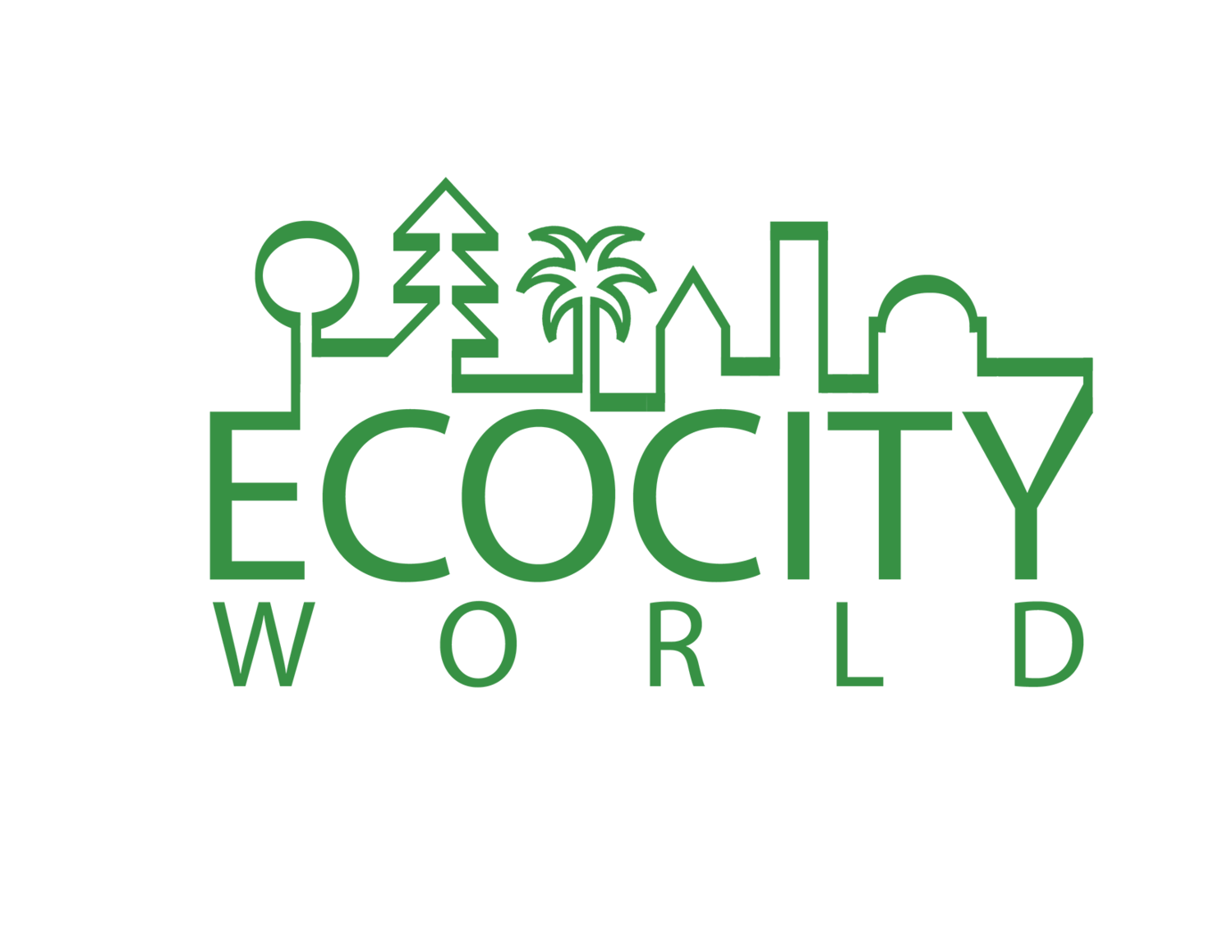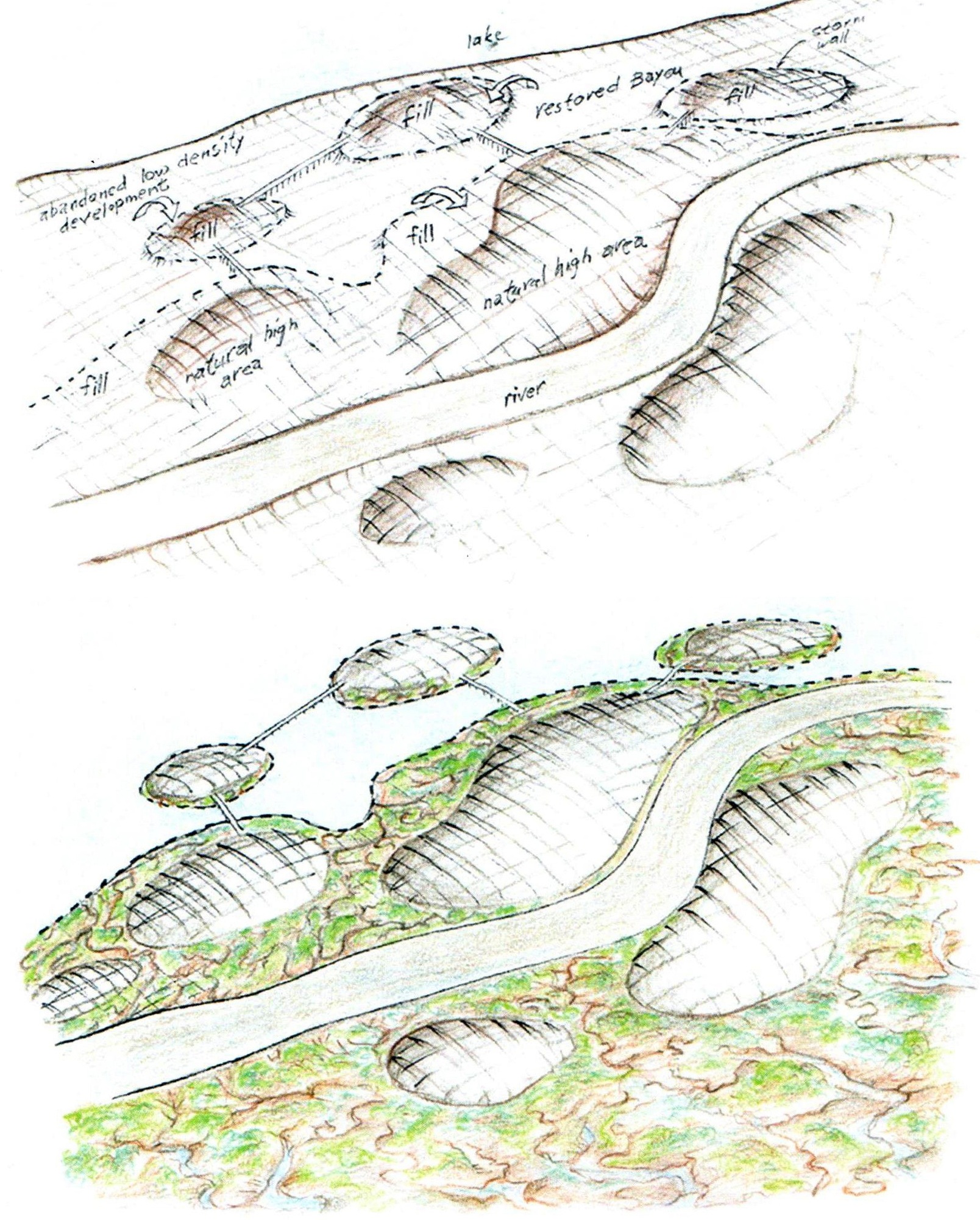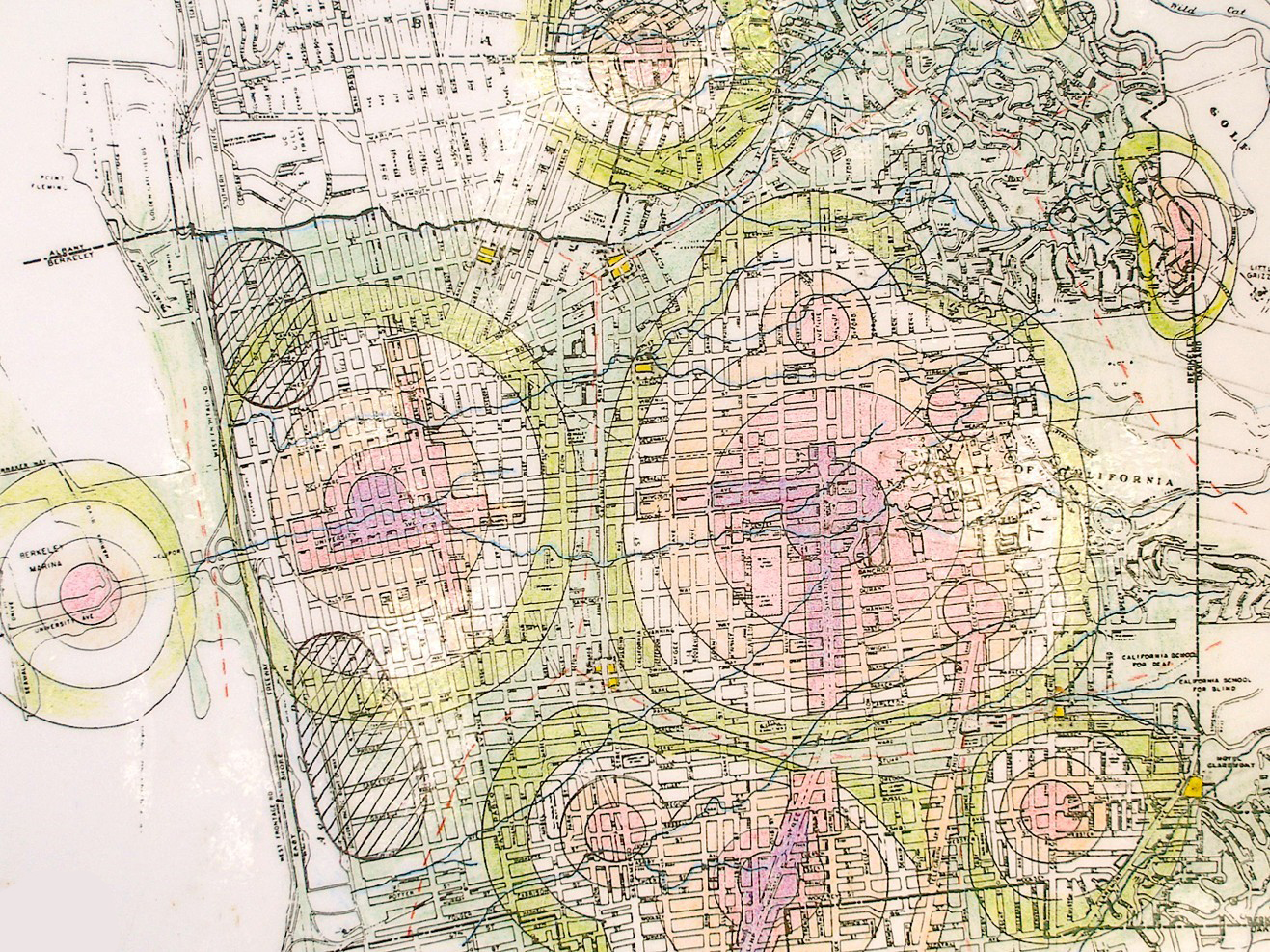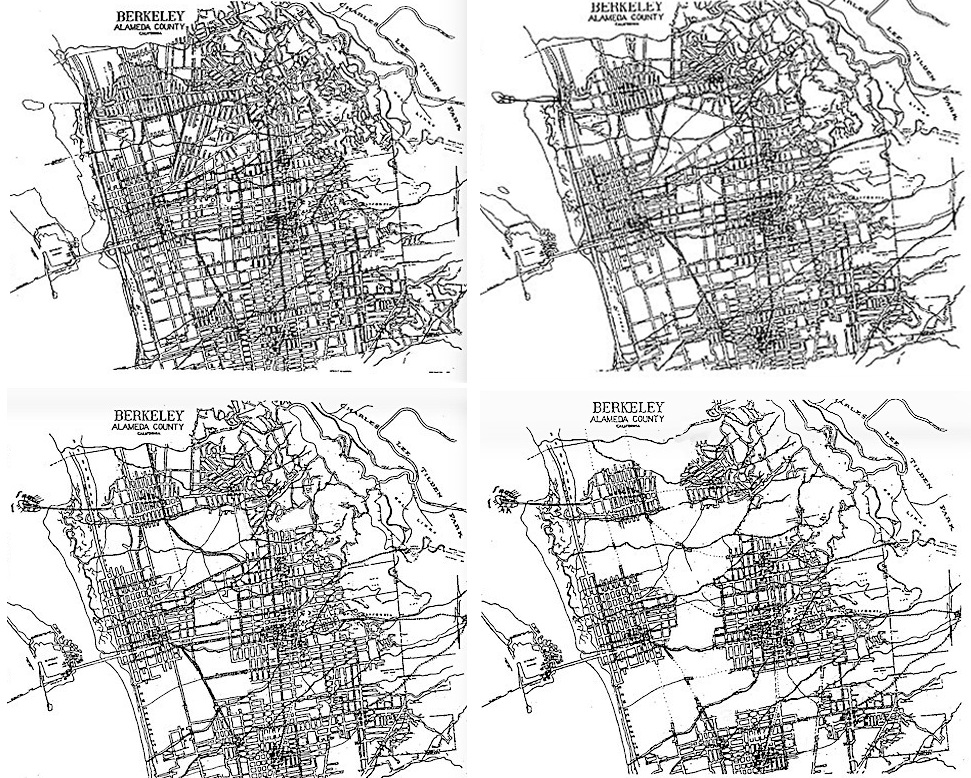Bigger Bay Ecotropolis
A generalized model for elevating cities and restoring natural landscapes (all drawings by Richard Register)
This project aims to spread – and ultimately bring to life – a vision for a far more liveable and resilient San Francisco Bay Area, one that can also be applied to other coastal and flood-sensitive metro regions across the globe.
The Bigger Bay Ecotropolis vision contains three core ideas:
The “ecotropolis” concept itself. Today’s metropolitan areas, largely taken over by car-driven low-density sprawl, can be rearranged by selecting the most lively pedestrian-friendly centers, contracting and densifying them, and re-introducing open space recovered from the intervening sprawl. Natural landscapes, waterscapes and productive agriculture can in this way be woven in-between the centers, into close proximity with where we live and thrive. Over time:
Downtowns become ecocities
Major district centers become ecotowns
Neighborhood centers become ecovillages
These centers transform into habitats designed around the human body and our physical, social and spiritual needs, rather than the car’s demand for land and energy at the expense of open space, biodiversity, productive soils, and our global climate.
Artificial mounds of earth in areas prone to flooding. This present-day response to rising seas and increasing storm severity goes back 4,500 years to the Sumerian cities of Ur – the oldest on the planet - in the frequently flooded valley of the Tigris and Euphrates rivers. Even in today's civilization, ancient innovations are often the most instructive: simply raise cities at least 20' above base water levels. Clearly, much less simple is the actual path to achieving this with our existing cities - but it will be even less so when they are already underwater.
“Synergy” - the mutiplying (rather than simply additive) effect of two or more good things happening together. The combination of pedestrian-oriented density and elevated platforms will inevitably produce and support a variety of other innovative features, creating even more sustainable urban environments and lifestyles.
The densification of today's sprawling cities into multiple elevated centers is not just an adaptation to floods and rising seas but also a means of significantly reducing the problem in the first place - radically diminishing, through the reduction of automobile-oriented development, one of the most significant drivers of climate change.
1983 map of Berkeley, California, with tones added to highlight differently-sized centers. Warmer colors denote increasingly dense and functionally diverse development over time, cooler colors represent areas to be opened for natural landscapes and farming, and the white bands can go either way.
Changing landscape of Berkeley over time, growing out of the previous diagram. The upper left illustrates withdrawal from the lowest density development about 25 years after significant change begins, with 20-50 years between each subsequent map. The resulting condition is a cluster of differently-scaled centers with different characters, surrounded by natural and agricultural corridors allowing for continuity of plant and animal habitat and incorporating restored creeks and other waterways . Major streets connecting these centers could tunnel under or bridge over portions of these corridors.
Main image from a poster submitted for the 2009 Rising Tides Competition for assessing possible futures for the San Francisco Bay Area. The dashed line represents the present bay edge, which will migrate inland as sea levels rise and force the removal of much existing low-density development. Note that the particular style of these drawings should not be seen as limiting the stylistic possibilities for architecture, building by building.
A coastal ecovillage on an elevated platform, shaped to divert wave energy during storm events





